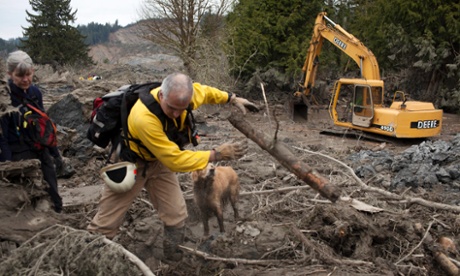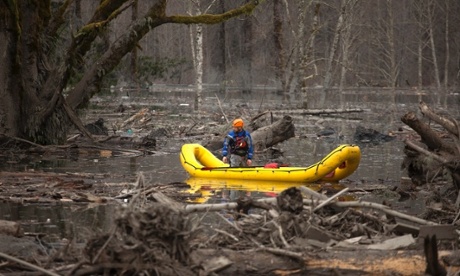
Five days after a catastrophic mudslide buried a rural area near Oso, Wash., killing at least 16 people, authorities raced to locate survivors. The list of those reported unaccounted for or missing after the slide fell Wednesday to 90 from 176, though officials said the status of 35 other names was now classified as "in question."
Authorities in any disaster initially cast as wide a net as possible in compiling a list of possible victims, erring on the side of overestimating, said Kim Zagaris, fire chief for the California Governor's Office of Emergency Services.
Typically, officials start by consulting public records, such as property records, to calculate how many structures are in the affected area. Then, they try to determine how many of those buildings were known to be occupied, and how many other people potentially could have been in the area, including those who may have been visiting or traveling through, Mr. Zagaris said.
Ronald Klamecki, a Los Angeles Fire Department captain assigned to search and rescue, said it isn't unusual for the number of missing people to fluctuate, meaning it can take days to figure out the scope of a disaster.
Mr. Klamecki, who searched for survivors after the 2005 La Conchita landslide in Southern California that killed 10 and destroyed 13 houses, said that while he and other rescuers dug bodies out of ruined houses and dirt, other officials looked up property records and tried to contact owners to narrow down the number of missing.
It is especially tricky, he said, "when you've got a mix of year-round residents and some vacation homes," which was the case in La Conchita as well as in Oso. "It took a few days to figure out who was there and who wasn't."
Officials say they must assume that anyone who may have been in the affected area is missing until proven otherwise.
"It's not like an airline where you have an official manifest," said Bryan W. Koon, director of the Florida Division of Emergency Management and vice president of the National Emergency Management Association.
As to what could drive up the number on a missing-persons list days into a disaster, Mr. Koon said it could result from someone who missed a doctor's appointment or failed to return to work from a scheduled vacation and was reported missing. Or, he said, "it could be that they are in a shelter and their cellphone has died."
In compiling the list in Oso, officials drew from various databases, including property records, rental information and driver's licenses, said Marybeth O'Leary, a spokeswoman for Snohomish County. They also received reports on missing people from friends, relatives and neighbors who called a hotline.
"They are trying to make sure they get everyone," Ms. O'Leary said.
She said the county revised the number of names on the list—to 108, then to 176—as more records became available Monday and individual lists were combined.
The number, "as discouraging as that sounds, [it] is exactly what we were looking for, which was information and data," said John Pennington, Snohomish County's emergency management director. "A good analogy, I think, is John Doe, 123 Steelhead Lane, brown hair, brown eyes; John, brown hair; John, 58 years of age. Of the 176, it's probably the same person."
Three Snohomish County Sheriff's officers, including missing-persons investigators, are helping three other analysts and several volunteers sort through the list to narrow it down, said Ms. O'Leary.
They are checking the names against those who have reported themselves being safe. They also are searching for contact information for those reported missing and making calls to try to ascertain who should remain on the list, said Ms. O'Leary.
Officials later will reconcile the revised list with the list of bodies recovered, Ms. O'Leary said.
Thursday 27 March 2014
http://online.wsj.com/news/articles/SB10001424052702303325204579463533604712424





